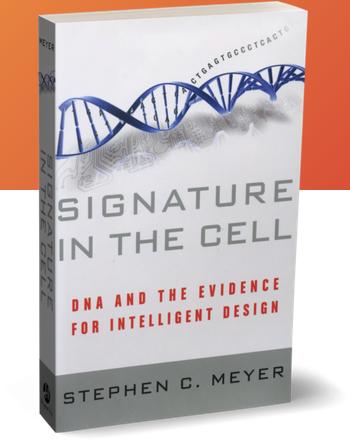Book review: Signature in the Cell (2 of 2)
This blog article is the second part of a review of …
______________________________Signature in the Cell: DNA and the Evidence for Intelligent Design, by Stephen C. Meyer (New York: Harper Collins, 2009, 613 pages)
______________________________ Chance, necessity, and intelligence
Of the competing hypotheses to explain the existence of complex, specified information in DNA, Meyer considers chance (random processes created the information); necessity (natural processes created the information); and intelligence (a mind created the information). As one might expect, Meyer dismisses the first two in favor of the third as having more “explanatory power.” Random processes could not, Meyer argues, produce the information by chance. The probability of this happening is calculable to a high level of confidence, and the probability is so microscopically low as to be discarded. The universe itself, even if composed exclusively of the materials necessary to form the information-bearing DNA, interacting at a maximum rate for its entire history, lacks the “probabilistic resources” to make this option viable.
Necessity, that is natural processes, theoretically can indeed create information, but not complex information. By their very nature, they create redundant, predictable results. No known natural process can create complex information.
By contrast, complex and specified information is known to come from a mind, intelligence. In fact, the only known source of complex, specified information is intelligence. Intelligent Design is the best explanation, the one with the most explanatory power, and the only known cause of information.
Predictions and testing in Intelligent Design
Intelligent Design makes predictions, just as other historical sciences make predictions. An apparent counter example of ID is the existence of “junk” (non-functional) DNA. While not a complete deal-killer for ID, the existence of junk DNA fits better with the chance hypothesis than with the ID theory. If random processes are responsible for the existence of the information in DNA, we would expect to find some failed “experiments,” codes that have no apparent function.
Such seemed to be the case with so-called “junk” DNA until was discovered to function as a kind of operating system for the information storage capability in DNA. In fact, the organization and “filing system” of the complex information in DNA, as directed by the supposed junk DNA, operates as an impressively efficient information retrieval system.
Enjoyable read
Meyer’s book was thoroughly enjoyable, although a little intimidating for me. Thankfully, he labeled some sections as for the experts and invited the lay reader to skip over them or skim them, which I did. His story-telling ability and conversational style made this difficult information accessible to me. Meyer is impressively credentialed. According to the back cover, he received his PhD from the University of Cambridge in the philosophy of science and is the director of the Center for Science and Culture at the Discovery Institute in Seattle. According to Wikipedia, “Meyer first came into higher visibility in 2004 with controversy surrounding the publishing of an essay he authored entitled, ‘Intelligent Design: The Origin of Biological Information and the Higher Taxonomic Categories,’ in the Smithsonian Institution-affiliated peer-reviewed scientific journal, “Proceedings of the Biological Society of Washington.” Signature in the Cell is his first book. His second book, Darwin’s Doubt: The Explosive Origin of Animal Life and the Case for Intelligent Design published in 2013, argues for Intelligent Design as a potential explanation for the abrupt appearance of animals in the fossil record.
